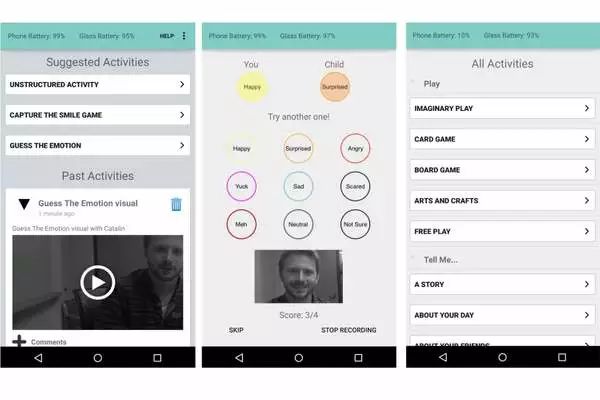
GoogleGlass has had a rough time.It's been a while since last July, when Google unveiled a new, sleeker looking version of Google Glass that shifted its focus from the mass market to the professional workplace.But a recent project at Stanford University will reboot the technology.
The Stanford School of Medicine is working on a project called SuperPowerGlass.Published in NPJ Digital Medicine in a study report, recently, the researchers through the combination of Google Glass and facial recognition software, developed a can tell the wearer, people are expressing what mood of new course, the hope can ease the current plight of social common people with autism, improve their social development and living in the future in the growth process.
According to the National Autism Society, autism is a lifelong developmental disability that particularly affects how a person communicates and connects with others and how they experience the world around them.In addition, it can be difficult for people with autism to learn these skills through therapy, not to mention what an expensive treatment it can be.

However, the Superpower Glass project combines Google Glass with smartphone apps to use technology to help children improve their social skills.Specifically, during the test, the team invited 14 autistic children from 12 families to participate in the new treatment.During the trial, the glasses recorded what the children saw through the glasses and then sent the data to the app.
It is understood that the app uses machine learning and artificial intelligence to automatically recognize facial expressions and then prompts the child to engage with what they see.And the tests showed that eye contact did improve when the children were in contact with people.Unfortunately, the test didn't include a control group, so it wasn't possible to verify that the improvements were 100% due to GoogleGlass assistance.
Since the study has a gamelike quality, it encourages children to connect with others to recognize facial expressions and emotions.If a green light goes on, it affirms that they have made eye contact with others, as well as an encouraging emoji if the emotion is correctly identified.
"It's a fun, engaging opportunity," Dennis Wall, senior study author on the project, told the media. "It creates interaction for families that might not otherwise have an emotional connection."
Meanwhile, one parent, Donji Cullenbine, said she quickly noticed a change in her son Alex.
"It's really exciting.I've been trying to motivate him to look at me for years but I've never gotten a response.But within two weeks, it's like a switch has been turned on and he's like, 'Mum, I can read thoughts'."
Research on SuperPowerglass is ongoing and the team hopes it will be widely used by people with autism.
In addition, for the use of technology to help improve the problem of autism, many giants have proposed related solutions.In 2014, for example, Samsung launched an App to help autistic children improve their communication skills;Start-up Mightier has a gaming platform to help people with autism and ADHD learn how to manage their emotions.MIT, on the other hand, uses a smartwatch App to analyze the voice and tone of people's conversations to understand ambiguous content and help users identify the current emotional state of the speaker.